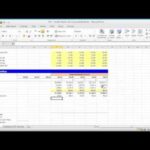Content
- History of IAS 1
- Is a loan’s principal payment included on the income statement?
- Examples of Interest Expense and Interest Payable
- Switch to smart accounting. Try Zoho Books today!
- Presentation of Interest Payable
- SIC-8 — First-time Application of IASs as the Primary Basis of Accounting
- A Critical Skill for Business Leaders
- Business Insights
The interest coverage ratio is defined as the ratio of a company’s operating income (or EBIT—earnings before interest or taxes) to its interest expense. The ratio measures a company’s ability to meet the interest expense on its debt with its operating income. A higher ratio indicates that a company has a better capacity to cover its interest expense. Existing borrowers can create an account in the MySBA Loan Portal (lending.sba.gov) to monitor their loan status, view statements, payment history and more. Payments can only be made using the MySBA Loan Portal for SBA-purchased 7(a) loans.
Suppose we’re tasked with forecasting the interest expense of a hypothetical company that has borrowed subordinated notes with the PIK optionality. In addition, companies that have found themselves in poor financial conditions and in need of debt restructuring can seek to renegotiate debt terms to include the option for PIK. PIK interest can be especially attractive to borrowers that are looking to avoid having to incur interest payments to conserve cash (i.e., leveraged buyouts).
History of IAS 1
Let’s look at each of the first three financial statements in more detail. Notice that only the interest expense of $60 will be included on the income statement. For example, a business borrows $1000 on September 1 and the interest rate is 4 percent per month on the loan balance. Interest is a reduction to net income on the income statement, and is tax-deductible for income tax purposes.

Typically, you may have up to 3 to 5 years to pay off your balance. Interest from your bonds goes on your federal income tax return on the same line with other interest income. Here’s the income statement for the first quarter of this year for a new local football association. If the cash https://kelleysbookkeeping.com/ interest component did not exist and the form of interest was instead PIK, no cash interest would be paid throughout the term of the loan. Therefore, we can see how the $80k of interest accrued towards the principal for the ending balance calculation for Year 1 for a total of $1.08m.
Is a loan’s principal payment included on the income statement?
First, interest expense is an expense account, and so is stated on the income statement, while interest payable is a liability account, and so is stated on the balance sheet. Second, interest expense is recorded in the accounting records with a debit, while interest payable is recorded with a credit. Third, interest expense may or may not have been paid to the lender, while interest payable is the amount that has definitely not yet been paid to the lender.
Interest expense is the total amount a business accumulates (accrues) in interest on its loans. Businesses take out loans to add inventory, buy property or equipment or pay bills. If the same company takes on debt and has an interest cost of $500,000 their new EBT will be $500,000 (with a tax rate of 30%), and their taxes payable will now be only $150,000.
Examples of Interest Expense and Interest Payable
Put simply, your company’s cash flow statement demonstrates how your business generated and used its cash. Your cash flow statement will present your company’s cash inflows and outflows as they relate Does Payable Interest Go On An Income Statement? to operating, investing and financing. The final line of the statement of cash flows will reveal whether your business experienced an increase or decrease in cash in a defined length of time.

All student borrowers in repayment will be eligible to enroll in the SAVE plan. They will be able to enroll later this summer, before any monthly payments are due. Borrowers who sign up or are already signed up for the current Revised Pay as You Earn (REPAYE) plan will be automatically enrolled in SAVE once the new plan is implemented. To learn more about the new SAVE plan, visit the Department of Education’s website.

